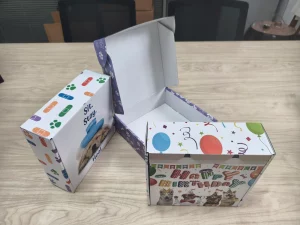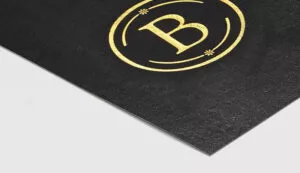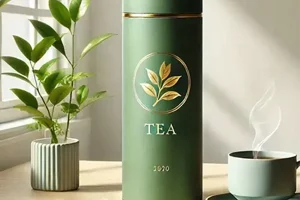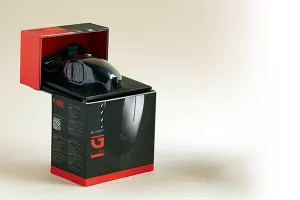I want a shipping material that looks natural, feels strong, and showcases my brand’s eco-friendly side. Sometimes I worry if plain plastic envelopes send the wrong message.
A kraft mailer is a shipping envelope made from strong, unbleached paper fibers. It protects lightweight goods while giving a rustic, eco-friendly vibe.

Kraft paper stands out for its durability and natural appearance, making it popular for mailers that need both function and style. Let’s look at whether kraft paper is good for shipping, why it can be pricey, and how to tell if it’s really kraft paper.
Is kraft paper good for shipping?
I often wonder if kraft mailers can handle rough mail routes. I want to keep items secure without adding weight or unnecessary plastics.
Kraft paper excels at shipping small to medium items because it’s tear-resistant, lightweight, and naturally shock-absorbing. It’s often sturdy enough for everyday e-commerce needs.

Kraft paper is not just regular paper. It’s made through a special pulping process that leaves most of the wood’s natural lignin intact, which strengthens the paper fibers. This higher tensile strength means kraft mailers can handle normal shipping wear and tear better than many other thin paper options. When I tried standard envelopes, I found them prone to ripping at corners or failing in wet weather. Kraft mailers, on the other hand, have a tighter weave, making them more resistant to accidental tears or moisture intrusion.
One reason kraft mailers are good for shipping is their balance of durability and weight. They offer enough protection for less fragile items like soft goods, clothing, or well-padded small accessories. While they might not replace a box for shipping breakable glassware, they do a great job for e-commerce sellers of t-shirts or handmade jewelry. Using kraft mailers lowers overall shipping costs because the mailers add minimal weight. Even for heavier items, a double-layer or bubble-lined kraft mailer can handle the load while keeping shipping fees in check.
Another advantage is their eco-friendly perception. Consumers value businesses that reduce plastic usage, and kraft mailers often represent a greener choice. The paper can come from recycled or certified sustainable sources, aligning with brand identities that prioritize environmental consciousness. I’ve seen that customers notice these details, sometimes even posting about them on social media, praising businesses for thoughtful packaging. This kind of organic promotion can bolster brand loyalty.
Kraft mailers also accommodate branding. Because they have a rustic, neutral background, printing a logo or tagline in darker ink is straightforward. I appreciate how the design can be subtle or bold, depending on my preference. Minimalist black text on natural brown paper can look stylish and premium, especially for artisanal or eco-centric products. On top of that, kraft mailers tend to fold or seal easily without needing excessive tape, so I can streamline the packing process.
Still, it’s vital to recognize the limitations of kraft paper for shipping. If the item is especially fragile or valuable, a thicker, more protective material—like corrugated cardboard—might be safer. Or I might combine kraft paper with extra padding, like bubble wrap or foam inserts, for an added layer of security. In any case, for everyday or mid-level shipping needs, kraft mailers provide a cost-effective, environment-friendly solution that merges brand presentation with dependable protection.
Why is kraft paper so expensive?
I sometimes gasp at the price tag for kraft products. I assumed paper was cheap, so why does this unbleached variety cost more?
Kraft paper can be expensive because of the higher-quality pulp, specialized processing, and growing demand for eco-friendly materials. Sustainable sourcing also adds to the cost.

Kraft paper’s premium price originates from its production method and market dynamics. The kraft pulping process uses specific chemicals and higher temperatures, breaking down wood chips into pulp while preserving much of the original fiber’s strength. This results in paper that’s tougher and more tear-resistant than standard pulp paper. The chemical used—typically sodium hydroxide and sodium sulfide—removes lignin selectively without overly damaging cellulose fibers. Because this process is more involved, it demands more energy and specialized equipment, which drives up the price.
Another factor is the quality of raw materials. Many mills producing top-grade kraft paper insist on certain wood species or a particular mixture of hardwood and softwood. Some mills also integrate recycled content to meet environmental standards, ensuring final products contain a percentage of post-consumer pulp. This combination of strict fiber requirements and the complexity of controlling pulp cleanliness can raise production costs. Mills must handle thorough quality checks, chemical recycling, and waste management to meet regulations—particularly if the paper is food-safe or meets certain certifications.
Market demand for eco-friendly packaging also influences price. With an increasing number of brands ditching plastic mailers in favor of biodegradable or compostable solutions, demand for kraft paper has soared. Mills can only scale production so quickly, especially because the energy-intensive processes need stable raw material supplies. When demand outstrips supply, prices climb. I see that in e-commerce: more businesses want kraft-based packaging, so the paper’s cost remains relatively high.
Moreover, there is the brand value of sustainability. Some producers position their kraft paper as superior, ethically sourced, or specialized for certain uses like heavy-duty shipping or direct food contact. This specialization can include extra certifications—like FSC (Forest Stewardship Council)—which means suppliers pay for audits and licensing fees. These costs trickle down into the final price. While the product is indeed more eco-friendly, I have to pay a premium for that peace of mind.

Logistics and shipping costs can also add to the expense. Large kraft paper rolls or reams are bulky, so transport from mill to converter, and then from converter to packaging suppliers, can be costly. Add fuel surcharges or supply chain disruptions, and prices can fluctuate widely. If I see abrupt changes in global commodity prices or shipping container shortages, that might reflect in kraft paper’s final cost.
Though I might wince at the higher price tag of kraft paper1, I see how it balances out. It’s a stronger, more durable packaging that can cut down on breakage and negative customer experiences. Its eco-friendly cachet can attract environmentally conscious buyers. In some cases, that brand loyalty offsets the premium cost. For me, paying more for kraft means I support responsible sourcing and deliver a packaging solution that resonates with modern consumer values. In a crowded marketplace, that difference might be crucial in building trust and setting my brand apart.
How do you identify kraft paper?
I wonder if that brownish, fibrous sheet is truly kraft paper or just tinted cardboard. How can I tell it’s the real deal?
Authentic kraft paper has a natural brown hue, visible fiber patterns, and a slightly coarse texture. It’s also stronger and more tear-resistant than standard paperboard.

Identifying kraft paper involves checking factors like color, texture, strength, and even the odor of the paper. Typically, kraft paper2 has a rich, unbleached brown shade that can vary from light tan to darker earthy tones. The natural color comes from the chemical pulping process that strips away lignin without bleaching. If I see an unnatural whiteness or consistent bright color, it might be bleached or partially bleached. While bleached kraft does exist, it tends to have a slightly different look, usually with a more uniform surface.
Texture is another clue. Kraft paper often has a slightly rough or grainy feel, partly because of the minimal finishing treatments. If I rub it, I might feel slight ridges or see small flecks of fiber. On the other hand, standard cardstock or coated papers can be smoother or shinier. By holding a piece of suspected kraft paper up to the light, I can often see the random fiber layout inside the sheet. Uniform fiber arrangement might mean a processed or non-kraft stock.
Strength is key. I can do a quick tear test by applying pressure at a corner or edge. Kraft paper usually resists tearing, requiring more force to rip. Once torn, the edges often look fibrous or fuzzy, with strings of fiber rather than a smooth cut. This occurs because the pulp still contains robust cellulose strands that hold the paper together. A weaker or standard paper might tear more cleanly or more quickly. This isn’t a foolproof test, but it can be a good initial indicator.
Odor can give a subtle hint too. Real kraft can carry a faint woodsy or papery scent. Though not always obvious, if the paper was recently processed, a mild chemical tang from the pulping process might linger. Standard papers often have less of a distinctive smell or smell only of ink or coatings.

Finally, I look at labeling or certifications. Many suppliers mark their paper as “Kraft,” “Natural Kraft,” or “Virgin Kraft.” If it’s recycled kraft, the labeling might mention the percentage of post-consumer content. Reputable mills or distributors often provide specs listing weight, tear strength, or special finishes. If in doubt, I request a sample or test sheet from the manufacturer. This helps me confirm it’s genuine kraft and not just tinted or partially bleached stock with limited strength.
Recognizing real kraft paper matters for brand consistency, especially if I’m marketing umweltfreundliche Verpackungslösungen3. I want to ensure my packaging claims match the actual product. By verifying color, texture, tear resistance, and certifications, I can confidently label it as kraft. This fosters trust with my customers, who appreciate transparency about materials. Over time, they learn to expect a certain standard from me—knowing that when I say “kraft,” I mean the real deal, strong, unbleached, and authentic.
Schlussfolgerung
Kraft mailers use unbleached, strong paper that stands out for shipping lightweight items. Though it can be more expensive, kraft’s durability, natural look, and eco-friendly appeal make it a worthwhile investment.
-
Explore the advantages of kraft paper, including its durability and eco-friendliness, which can enhance your brand’s appeal. ↩
-
Understanding the characteristics of kraft paper can help you identify its quality and uses effectively. ↩
-
Exploring the benefits of eco-friendly packaging can enhance your brand’s sustainability efforts and attract environmentally conscious customers. ↩








